How is high blood pressure diagnosed? What is the basis for determining high blood pressure?
Hypertension is a very common chronic disease in our life, it is a group of clinical syndromes that mainly manifests with the blood pressure of the arteries in the body circulation persistently exceeding the normal value, and can be accompanied by complications of the heart, brain, kidney and other organs. The commonly used diagnostic standard is clinic blood pressure, measured by a doctor, but some people are prone to white coat hypertension (normal blood pressure, high blood pressure once you see a doctor), so we also recommend home self-measurement of blood pressure and 24-hour ambulatory blood pressure for diagnosis.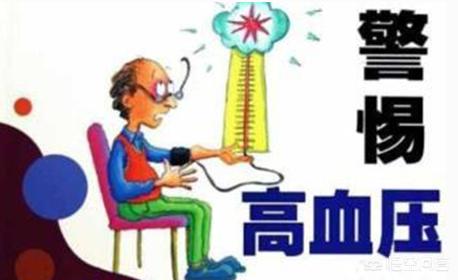
I. Precautions for blood pressure measurement
We should pay attention to blood pressure measurement: ① at least 5 minutes of quiet rest before measurement, to empty the urine, while half an hour before the measurement should avoid smoking, tea or coffee, etc.; ② measurement should be taken in a sitting position, feet flat on the ground, relaxed and the body to remain motionless, do not talk; ③ to keep the cuff of the sphygmomanometer and the heart at the same level, placed on the elbow of the two horizontal fingers, the elasticity of the appropriate degree of can be put a finger or two fingers; ④ the first time the measurement of blood pressure should be measured Measure both upper arms for the first time, and then usually measure the side with high reading, if the bilateral difference is more than 20mmHg, we should pay attention to discharge secondary hypertension; ⑤ Confirmation of the diagnosis should be measured twice on a day other than the same day, each time should be measured three times, each time with an interval of 1~2 minutes, and take the readings closest to the average of the two times.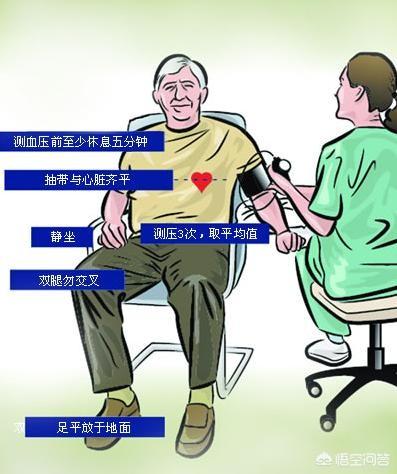
II. Diagnostic criteria for hypertension
Diagnostic criteria for hypertension can be divided according to the place and person of measurement: ① clinic blood pressure: currently the most commonly used, the standard for systolic blood pressure ≥ 140mmHg and/or diastolic blood pressure ≥ 90mmHg; ② home self-testing of blood pressure: can be avoided by the white coat hypertension, the standard for systolic blood pressure ≥ 135mmHg and/or diastolic blood pressure ≥ 85mmHg; ③ ambulatory blood pressure monitoring: can be diagnosed by meeting any of the following. Including a, daytime average blood pressure: systolic blood pressure ≥135mmHg and/or diastolic blood pressure ≥85mmHg; b, nighttime average blood pressure: systolic blood pressure ≥120mmHg and/or diastolic blood pressure ≥80mmHg; c, 24-hour average blood pressure: systolic blood pressure ≥130mmHg and/or diastolic blood pressure ≥80mmHg.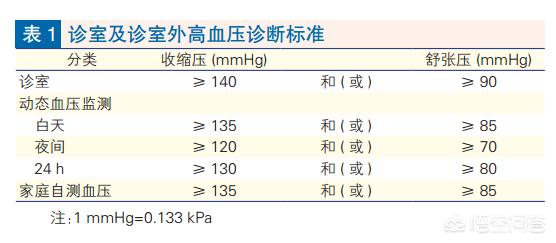 Thank you for reading, and I hope that you will correctly recognize hypertension, and that the diagnosis of hypertension should be followed by active lifestyle interventions, along with medication, and that secondary hypertension should be treated aggressively for the primary cause. Finally, I wish you all good health.This article was originally written by General Practice Sweeper on Today's Headlines & Wukong Q&A.
Thank you for reading, and I hope that you will correctly recognize hypertension, and that the diagnosis of hypertension should be followed by active lifestyle interventions, along with medication, and that secondary hypertension should be treated aggressively for the primary cause. Finally, I wish you all good health.This article was originally written by General Practice Sweeper on Today's Headlines & Wukong Q&A.
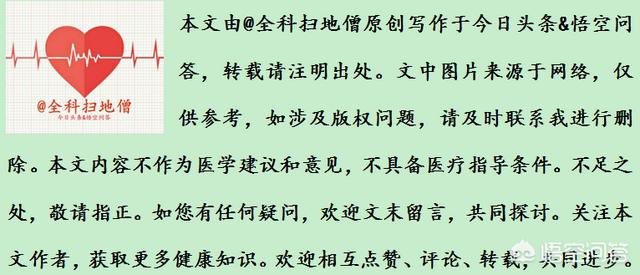
Of course it is to measure blood pressure, however, only one measurement of blood pressure cannot determine whether you have high blood pressure or not, it is better to measure several times at different times, if the blood pressure is always high, then it can only be judged as high blood pressure. Measurement of blood pressure should not be done in an agitated mood, after over-exertion or heavy physical labor, but always in a sitting position when it is quiet.
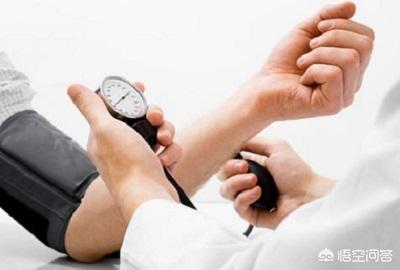
According to our Chinese standard, as long as the systolic blood pressure (high pressure) is higher than 140 mmHg or the diastolic blood pressure (low pressure) is higher than 90 mmHg, you can be diagnosed as having high blood pressure. Confirming whether you are hypertensive or not cannot be determined by how you feel, but by the measured blood pressure.
Once you have been diagnosed with high blood pressure, you do not have to take antihypertensive medication right away. Generally, antihypertensive medication is only necessary if your blood pressure is higher than 160/100 mmHg. When blood pressure is below this level, you can try to bring it down by making dietary and lifestyle changes first.
These practices are: eating less salt, one beer cap (6 grams) of salt per day; quitting smoking and drinking; eating less high-fat, high-sugar foods; strengthening physical activity, at least 30 minutes of outdoor exercise per day; controlling body weight and lowering the body mass index to less than 25 kilograms per square meter (calculated by dividing body weight by the square of body height), and so on.
If the blood pressure cannot be lowered to below 140/90 mmHg through lifestyle adjustments over a period of two to three months, it is time to consider taking medication to lower blood pressure. There are many antihypertensive drugs available, and it is best to choose a long-acting antihypertensive drug that is taken only once a day; the speed of the drug to lower blood pressure should not be too fast, and it is best to lower the blood pressure gradually over a period of 4-6 weeks; when an antihypertensive drug fails to lower the blood pressure below the standard, it is generally recommended that another antihypertensive drug be added rather than increasing the dose of the drug, and so on.
summarize

Hypertension is the most common chronic disease and the most important risk factor for cardiovascular and cerebrovascular diseases, with stroke, myocardial infarction, heart failure and chronic kidney disease as its major complications. Practice at home and abroad has proved that hypertension is a preventable and controllable disease. Reducing the blood pressure level of hypertensive patients can significantly reduce stroke and cardiac events, significantly improve the quality of survival of patients and effectively reduce the burden of disease. The harmful effects of hypertension are related to the patient's blood pressure level, but also depend on the presence of other concurrent cardiovascular disease risk factors, target organ damage, and the presence of other diseases in combination. Therefore, in the definition and classification of hypertension, the diagnostic criteria for hypertension are set at systolic blood pressure ≥140 mmHg and/or diastolic blood pressure ≥90 mmHg, which are categorized according to the blood pressure level in addition to normal, normal-high-value blood pressure, and grade 1, 2, and 3 hypertension, and also risk stratification based on risk factors, target organ damage, and other diseases that are concomitantly comorbid.
Classification of high blood pressure
1、Categorized by etiology
(1) Primary hypertension: refers to a clinical syndrome of undetermined etiology that is characterized by elevated arterial blood pressure in the body circulation. Prolonged hypertension can cause serious complications in the heart, brain and kidneys, and ultimately lead to the functional failure of these organs.
(2) Secondary hypertension: in about 5% of cases, the blood pressure is elevated as one of the clinical manifestations of certain diseases.
(3) Monogenic hypertensive disorders
2、Classified according to the type of elevated blood pressure
(1) Simple systolic hypertension: systolic blood pressure ≥ 140 mmHg and diastolic blood pressure < 90 mmHg.
(2) Simple diastolic hypertension: systolic blood pressure <140 mmHg and diastolic blood pressure ≥90 mmHg.
(3) Systolic/diastolic hypertension: systolic blood pressure ≥ 140 mmHg and diastolic blood pressure ≥ 90 mmHg.
Early Symptoms of High Blood Pressure
The early symptoms of hypertension are hidden, coupled with the fact that many people do not know much about hypertension and do not have a strong sense of self-care, and they do not seek medical treatment until hypertension has developed to a certain degree or caused more serious clinical symptoms. Some people compare hypertension to a "silent killer", because it is not like some diseases that first make people feel pain and alert them. We often see that some people have a sudden stroke or myocardial infarction, and they die in the blink of an eye, and most of these are caused by high blood pressure.
In fact, high blood pressure is not without any symptoms to follow, early signs of high blood pressure are:
1. Head swelling and pain behind the pillow.
2. Paroxysmal vertigo.
3. Uncomfortable chest tightness.
4. Numbness of the limbs.
Hypertension Danger Signs
1、Headache: the part is mostly in the back of the head, and accompanied by nausea and vomiting. If you often feel a headache, and very intense, and nausea and vomiting at the same time, it may be to the malignant high blood pressure into the signal.
2、 Vertigo: It occurs more often in female patients and may come on when suddenly squatting or standing up.
3. Tinnitus: Tinnitus in both ears, lasting for a long time.
4, palpitations and shortness of breath: high blood pressure can lead to myocardial hypertrophy, heart enlargement, myocardial infarction, and cardiac insufficiency, all of which lead to palpitations and shortness of breath.
5、Insomnia: Most of them have difficulty in falling asleep, waking up early, sleep is not solid, easy to have nightmares, easy to wake up. This is related to cerebral cortical dysfunction and autonomic dysfunction.
6. Numbness of limbs: Commonly, fingers and toes are numb or the skin feels like ants, and the fingers are not flexible. Numbness may also occur in other parts of the body, and there may also be abnormal sensation or even hemiplegia.
Initial high blood myths
Many patients in the treatment of high blood pressure has a lot of treatment misunderstandings, high blood pressure is lurking around the invisible killer, many times high blood pressure has come but the patient is not aware. Until the symptoms appear will not be aware of. Below we will analyze several psychological misunderstandings of hypertensive patients.
1. Not paying enough attention to high blood pressure. Since high blood pressure is relatively common and has no obvious symptoms at the initial stage, it is easy to be ignored. Although there are symptoms such as dizziness and blurred vision, they can be relieved after resting, so it is not easy to attract people's attention.
2, patients with poor health care awareness. After investigation, the reason why the prevalence rate of middle-aged intellectuals is significantly higher than that of workers may be multifaceted, in which intellectuals lack physical activity and regular life, not to mention time for exercise and health care, and are busy with work all day long. Long-term continuous tension makes many people suffer from high blood pressure.
3, bad habits are difficult to overcome. A lot of high blood pressure is caused by daily bad habits, but after discovering that they suffer from high blood pressure, patients do not correct them in time and still maintain their previous habits, which leads to the instability of the patient's blood pressure.
4, the cure depends on the medicine. Many hypertensive patients are too dependent on antihypertensive drugs, feel that as long as the medication on time can be all right. Antihypertensive drugs can indeed make the blood pressure drop, but it is by changing the body's physiological and biochemical activities to make the blood pressure drop, it is not difficult to understand why the drug will have side effects on the body, and this passive treatment is also subject to the body's subjective factors. The most obvious example is emotional excitement, accompanied by increased blood pressure, single use of antihypertensive drugs is very poor, if coupled with emotional control, or even without drugs, as long as the emotional control can be made to significantly reduce blood pressure.
Hello! Now with the improvement of people's living standards, long-term living and learning pressure may appear to a certain degree of blood pressure fluctuations, and more and more youthful, and this disease is the people most often troubled by a kind of disease, although it is said to be a simple increase in blood pressure, just a numerical value, the most serious is not only a numerical value of the problem, high blood pressure is a variety of cardio-cerebral and cerebral vascular disease is an important cause of the risk factors, the severity of which will affect the The important organs, such as the heart, brain and kidney structural function, and ultimately the failure of these organs, so that is also the main cause of recent cardiovascular and cerebrovascular deaths, so that must be taken seriously. How to confirm the diagnosis of high blood pressure to determine the basis of high blood pressure and what is it? Now for everyone to publicize and educate.
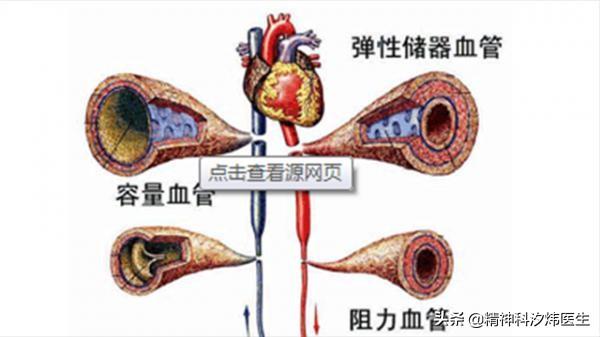
Diagnostic criteria for hypertension
1. In the non-medicated state.Blood pressure exceeding 140/90 mmHg on more than 3 measurements at different times on a non-same day.Hypertension can be diagnosed;
2. A previous history of hypertension should be diagnosed even though the blood pressure does not reach the above level in the medicated state;
3. Hypertension should not be judged by the severity of symptoms, but by the level of blood pressure, the duration of the disease and the presence or absence of complications.Hypertension can be categorized into Grade 1, Grade 2 and Grade 3 hypertension according to the level of blood pressure. Grade 1 hypertension is the level of blood pressure that is above normal and below 160/100; Grade 2 hypertension is the level of blood pressure that is below 180/110; and Grade 3 hypertension is the level of blood pressure that is above 180/110
4. There is also a part of the patient is not any symptoms, there is no feeling, can only be found when the physical examination, generally then the blood pressure is still particularly high, so that this patient will have potential risk factors, easy to miss the diagnosis, so that the physical examination is very important, the most routine physical examination is to monitor the changes in blood pressure, generally as long as more than 140 need to pay attention to this kind of patients are very dangerous, and This kind of patient is very dangerous, and it is also easy to be underdiagnosed.
After understanding the diagnostic criteria for hypertension, but the measurement of blood pressure is also very critical, and now generally the most common is the mercury column and electronic sphygmomanometer measurements, you must be sitting at rest, the upper arm brachial artery site blood pressure, theGenerally speaking, the left and right of the double upper arm basically will be 10 to 20 difference, some patients will say doctor my blood pressure two arms how so much difference, in fact, the gap is normal.Because there are times when this blood pressure fluctuates with an increase in a person's blood flow, a change in blood volume or a shift in body position.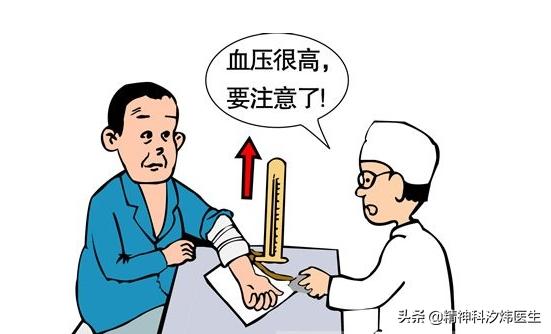
Some patients have inaccurate monitoring, or there is an error may affect the mood, the more emotional this blood pressure will fluctuate, the more fluctuation will cause emotional anxiety, this is a vicious circle. This is a vicious cycle. This is why it is important to confirm the diagnosis of hypertension. Sometimes inaccurate monitoring may affect the treatment and healing of the disease, hypertension is based on specific blood pressure fluctuations in the value of the general need to monitor the blood pressure for three days on a non-same day, if the diagnosis is not clear, you can monitor the 24-hour ambulatory blood pressure, which can reflect the circadian rhythm of your blood pressure for a day, with the necessary time can be adjusted according to this indicator of antihypertensive medication. Treatment, very scientific, and the effect is very obvious!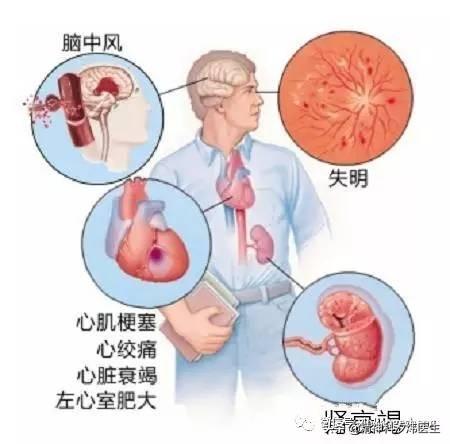
The prognosis of hypertension is not only related to the level of elevated blood pressure but also to other cardiovascular risk factors and the degree of target organ damage. In addition to risk factors, it is also important to check for the presence of target organ damage, which occurs in the target organs, such as the need to monitor the urine routine, blood glucose, blood cholesterol, blood triglycerides, renal function, blood uric acid electrocardiograms, which can help to detect relevant risk factors and target organ damage, and in some patients, according to the needs and conditions of the funduscopy, cardiac echocardiogram, blood ionization, low-density lipoprotein, protein and cholesterol, and the degree of damage to target organs. Some patients can further check the fundus of the eye according to the need and conditions, echocardiogram of the heart, blood ions, low-density lipids, proteins and cholesterol and high-density lipoprotein cholesterol, and all the indexes must be controlled to within the normal range.
In addition to elevated blood pressure, many factors in gender age smoking, blood cholesterol level blood creatinine, level of diabetes coronary heart disease on the cardiovascular and cerebrovascular risk is the most obvious, so it must be in the cardiovascular and cerebrovascular control of the new concept of the guidance of the implementation of anti-hypertensive treatment, control of a certain risk factor, attention should be paid to as far as possible, or at least do not aggravate the other cardiovascular and cerebrovascular risk factors, antihypertensive treatment program in addition to antihypertensive therapy, should also be Take into account the effect on glucose metabolism, lipid metabolism, uric acid metabolism, so that antihypertensive is a very complex process, but also according to each person's specific condition to adjust the drug.
Once diagnosed with hypertension, must have a professional doctor according to your specific blood pressure and there are no other changes in the factors to standardize the adjustment of medication, antihypertensive drugs there are many kinds of drugs, each person's medication of drugs and medication is not the same, should be individualized treatment, to improve the healing to prevent the occurrence of complications and the development of hypertension away from the danger of this high blood pressure on cardio-cerebral and cerebral vascular disease to improve their own body, refers to the quality of life to improve the quality of life! The life expectancy after healing can be extended.
1, very typical hypertension, patients, doctors can be diagnosed as soon as the measurement of blood pressure hypertension, and the need to be immediately initiated antihypertensive drugs and non-pharmacological treatment. China's hypertension prevention and management guidelines clearly indicate that different days to measure the blood pressure more than 140/90mmHg, to consider hypertension. The patient's blood pressure exceeds these criteria every time it is measured and is often too high. Hypertension is considered regardless of the presence or absence of symptoms such as headache and dizziness.
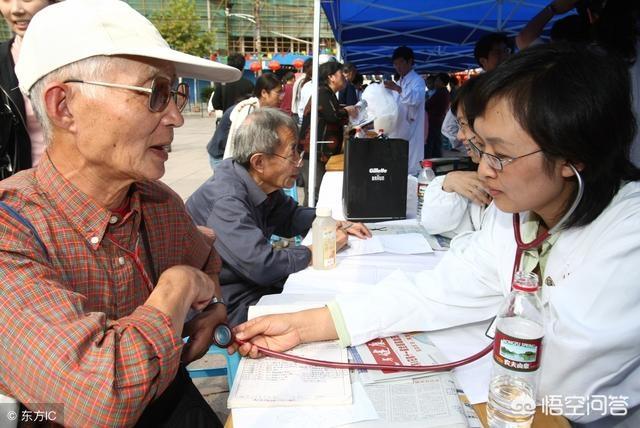
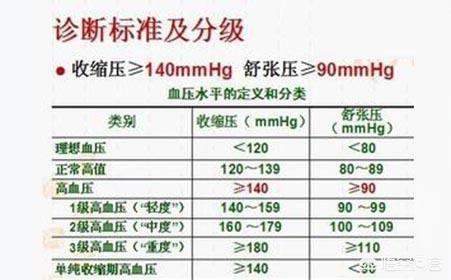
Dr. Wang Jr. joins you to take a look at this table.
Provided that the blood pressure you measure is accurate.
To ensure that your blood pressure is relatively accurate, a brief word about measurement, always after ten minutes of rest, with your forearms at the same level as your heart, can be measured at different times on the same day and recorded for comparison of whether or not you have high blood pressure.
After you have recorded your blood pressure, let's compare this table.
Remember two points: high pressure 140 mmHg, low pressure 90 mmHg.
Ideal high pressure is less than 120, ideal low pressure is less than 80, you can rest assured; if the high pressure is 120-139, low pressure 80-89, then it is normal high value, then you have to pay attention to it, high blood pressure is getting closer and closer to you.
When the high pressure is greater than 140 mmHg, or the low pressure is greater than 90 mmHg; or the high pressure is greater than 140 and the low pressure is greater than 90, this is hypertension.
The higher than these two values, the higher and more dangerous the blood pressure classification.
The latest China Cardiovascular Report 2017 clearly points out that there are 270 million hypertensive people in China, half of whom don't know they are hypertensive, and less than 14% of whom actually control their blood pressure.
All there is enough reason to popularize high blood pressure, and then there are those who say high blood pressure doesn't hurt why control it.
High blood pressure can cause heart failure, cerebral infarction, cerebral hemorrhage, coronary heart disease, myocardial infarction, aortic coarctation, renal failure, and other diseases, any of which can kill you, so you say it is important to control your blood pressure.
And it's especially easy to measure blood pressure these days. Most families have a sphygmomanometer, so there's no harm in taking one on the go.
Early detection and control.
High pressure 140, low pressure 90, any higher than that and you have to consider high blood pressure.
Normal range: high pressure 90--140mmHg, low pressure 60----90mmHg, the lower the better in the normal range.
Addendum: Americans have already adjusted their blood pressure values to 130/80 mmHg a while ago, what does that mean?
Blood pressure should be lower, and even now normal blood pressure will become hypertension when the diagnostic criteria are modified.
To make high blood pressure arrive a little later, please quit smoking, eat a low-salt, low-fat, low-sugar diet, and get plenty of exercise!
Hypertension is diagnosed when an adult's blood pressure is ≥140 mmHg systolic and/or ≥90 mmHg diastolic on a sustained basis or on three occasions not on the same day. This is the current criterion, which may have to be revised in the near future.
Please note that 140/80mmHg is high blood pressure, as is 130/90mmHg. Regardless of whether there are symptoms (sensations) or not, adults are recognized as hypertensive regardless of age if they meet this criterion.
Hypertension is a problem of high incidence among adults in our country. The high incidence of hypertension, the low rate of detection and the even lower rate of effective control is one of the realities that we have to face. Therefore, it is especially important to know about high blood pressure. Today, we will introduce you to the knowledge related to the diagnosis of hypertension.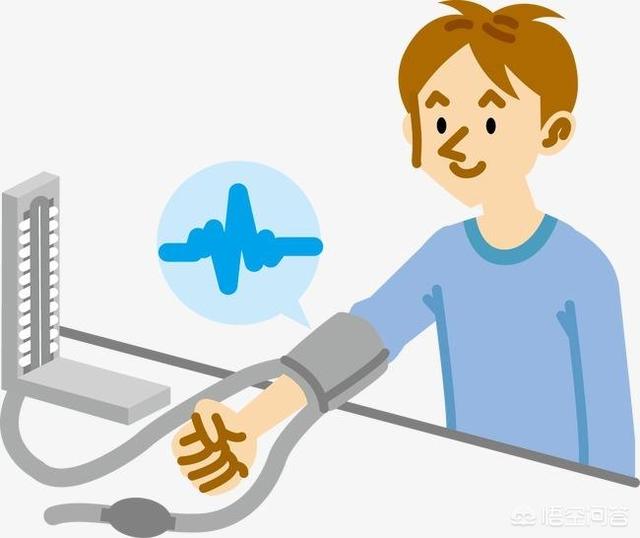
How is hypertension diagnosed?
To give you a couple of different scenarios -
1. According to the latest version of China's guidelines for the diagnosis and treatment of hypertension, a diagnosis of hypertension is basically confirmed when the blood pressure measured in the office exceeds 140 for systolic blood pressure and 90 for diastolic blood pressure, and when it exceeds these values at both points in time within a 2-week period.
2. Clinic measurements confirm the diagnosis of high blood pressure and need to rule out white coat hypertension, which is mainly due to the tension caused by meeting the doctor and seeking medical treatment. If the blood pressure is high when measured at the doctor's office, but normal when measured at home, then it is not necessarily because the sphygmomanometer is not permitted at home, but also because of the possibility that it may be white coat hypertension.
3. Many friends also have electronic blood pressure monitors at home, so they can measure their own blood pressure. Measuring blood pressure on your own and at two different points in time can also confirm a diagnosis of high blood pressure if both measurements exceed 135/85.
Family self-measurement of blood pressure, preferred upper arm type electronic sphygmomanometer, its accuracy is higher than the wrist sphygmomanometer and some of the so-called with the blood pressure measurement function of the bracelet, pay attention to the measurement to keep the mood calm, do not exercise strenuously before the measurement, do not drink alcohol, coffee, strong tea and other beverages, do not smoke.
4. Nowadays, there is another way of measuring blood pressure, called ambulatory blood pressure monitoring, which is a way of measuring blood pressure fluctuations by continuously monitoring the fluctuations of blood pressure of the human body within 24 hours to find out the pattern of blood pressure fluctuations and confirm the diagnosis of hypertension. 24-hour ambulatory monitoring, with an average of more than 130/80 within 24 hours, more than 135/85 during the daytime, and more than 120/70 during the nighttime, can also confirm the diagnosis of high blood pressure if it meets the above mentioned conditions. A diagnosis of hypertension can be confirmed.
Dynamic blood pressure monitoring can now be done in many regular hospitals, and now there are also 24-hour dynamic monitoring of home blood pressure monitor, we can choose according to the situation, dynamic blood pressure monitoring can not only be used to confirm the diagnosis of hypertension, but also help to figure out the pattern of fluctuations in blood pressure, for hypertension, life regulation and the choice of time to take medication to provide a basis.
5. Some friends simply have high low pressure, but their systolic blood pressure (high pressure) does not exceed the standard; while some friends have a large differential pressure, with high pressure exceeding 140 but low pressure not exceeding 90. For friends in this situation, on the one hand, it is necessary to find out and investigate the causes of high low pressure or large differential pressure, and on the other hand, no matter whether it is the low pressure that exceeds the standard or the high pressure that exceeds the standard, it belongs to the problem of hypertension, which is worth paying attention to as well.
When you find high blood pressure, you don't have to be overly nervous, but you must take it seriously
The reason why high blood pressure control rate is particularly low, because for the understanding of high blood pressure, there is such a polarization, part of the friends found to have high blood pressure, all kinds of tension, medicine is afraid to eat, for fear of injury to the liver and kidneys, life on the conditioning but do too much, quit smoking and alcohol restrictions, low-salt diet is not a problem, but some even do not dare to eat the eggs; and some friends found to have high blood pressure, think the blood pressure high point how to I don't feel bad at all, I don't feel that there is no problem, so I don't control my life, and it's even more impossible to take medication to control it. These two situations, one is not as good as the other!
It is very important to recognize and view hypertension correctly. For primary hypertension, belongs to the category of "slow disease", this kind of disease is characterized by the disease is difficult to cure, but can be controlled through the appropriate means of intervention, the initial stage is likely to be completely no feeling, but because of the lack of feeling and do not go to the control, in the long term, it will cause big problems! Take hypertension for example, if not controlled for a long time, it will cause atherosclerosis, cardiovascular and cerebrovascular problems, the kidneys, fundus, and other target organs will also cause irreversible damage, and when there is a heart attack, stroke and other big problems, and then go to the control of high blood pressure, it is often too late.
Therefore, if you find the problem of high blood pressure, neither need to be overly nervous, but also because there are no symptoms and ignore it, live a strict self-discipline, take a healthy and reasonable lifestyle interventions, life interventions, if the blood pressure control is still not good, as early as possible, a reasonable choice of medication to control the blood pressure, regardless of the way to control the blood pressure is stable, to minimize the health damage brought about by high blood pressure, is the ultimate goal.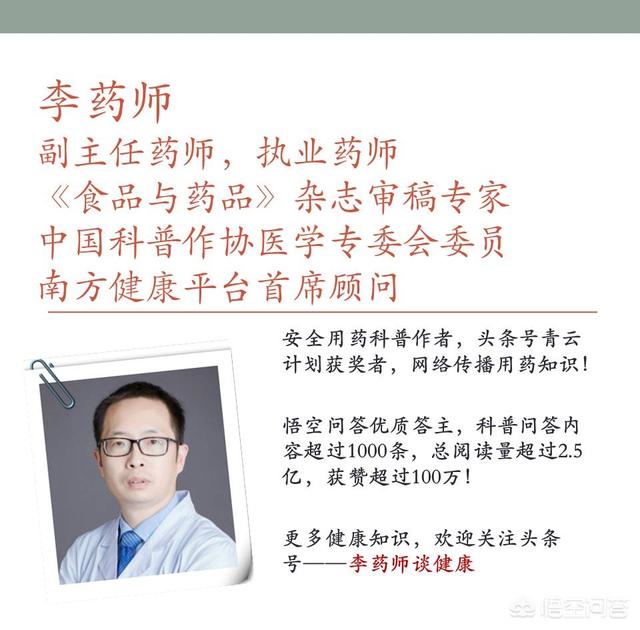
Hypertension is often diagnosed in a hospital office, and it is not the case that if you take your own blood pressure at home and find it elevated, you diagnose yourself with hypertension.
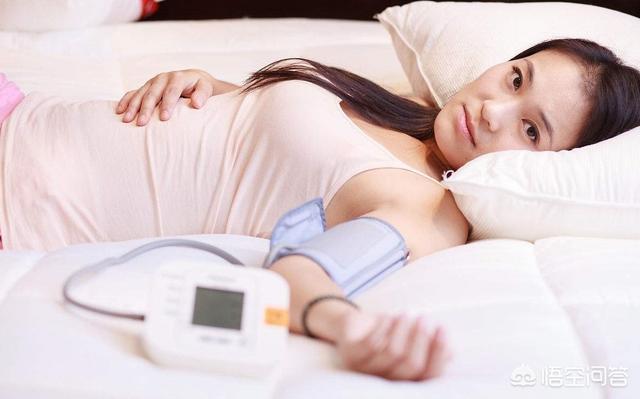
An approved mercury column or electronic sphygmomanometer should be used to measure the blood pressure in the brachial artery of the upper arm in a quiet resting position in a regular hospital. The sphygmomanometer should be accurate and the measurement should be done in the correct way and the patient needs to be in a quiet and relaxed state, not taking medication that affects the blood pressure, and not being affected by mental emotions.

Does high blood pressure mean high blood pressure? Of course not, it is necessary to measure the blood pressure three times not on the same day, systolic blood pressure are ≥ 140mmHg and/or diastolic blood pressure are ≥ 90mmHg, in order to diagnose hypertension, the patient has a history of high blood pressure, is taking antihypertensive medication, the measurement of blood pressure can be normal, but also to diagnose as high blood pressure.
If home self-measurement of blood pressure is to be referred to, then systolic blood pressure ≥135 mmHg and/or diastolic blood pressure both ≥85 mmHg are also considered diagnostic of hypertension.
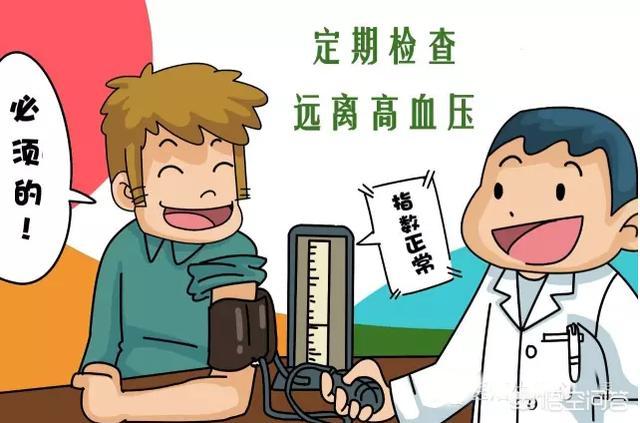
There is a better way to comprehensively assess a patient's blood pressure, and that is ambulatory blood pressure monitoring, which uses an instrument to automatically measure blood pressure at regular intervals, approximately every 15-30 minutes, and can be monitored and recorded continuously for 24 hours or longer, and it has a reference range of 24-hour average blood pressure ≤130mmHg/80mmHg, daytime average blood pressure ≤ 135mmHg/85mmHg, and the average nighttime blood pressure ≤ 120mmHg/70mmHg.
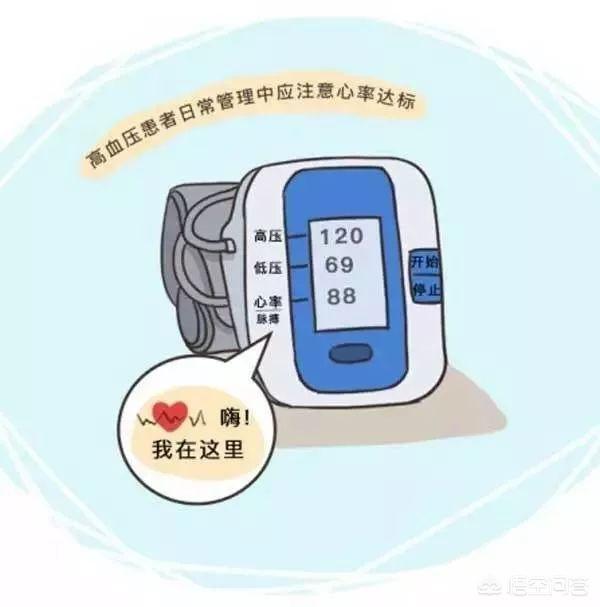
What are the benefits of ambulatory blood pressure monitoring? It can diagnose "white coat hypertension", detect hidden hypertension, and be used to examine the causes of persistent, refractory hypertension, assessing the degree of elevation of blood pressure, the timing of its occurrence, and changes in circadian rhythms, thus improving the effectiveness of treatment.
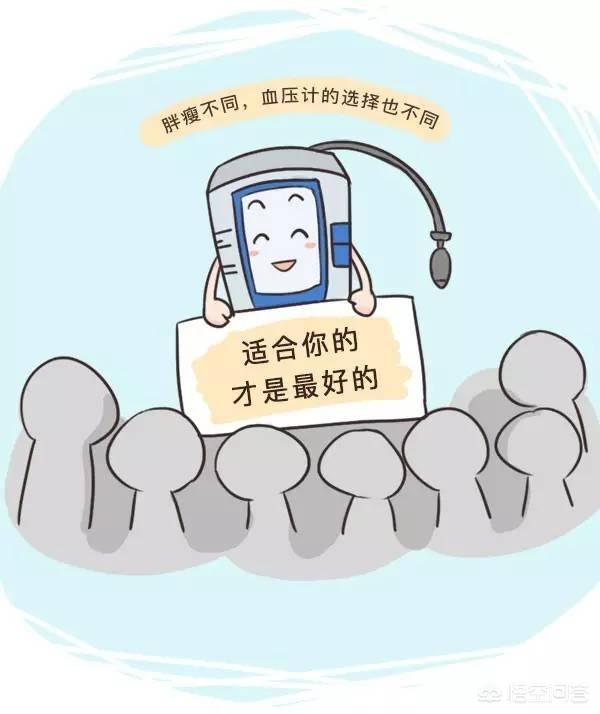
In general, the difference between the blood pressure of the left and right upper arm is about 10-20 mmHg, and generally the right side is greater than the left side (most people right-handed). If the difference between the blood pressure values of the left and right upper arms is very large, it is necessary to consider whether there is an obstructive lesion in the subclavian artery on one side and distal to the other.
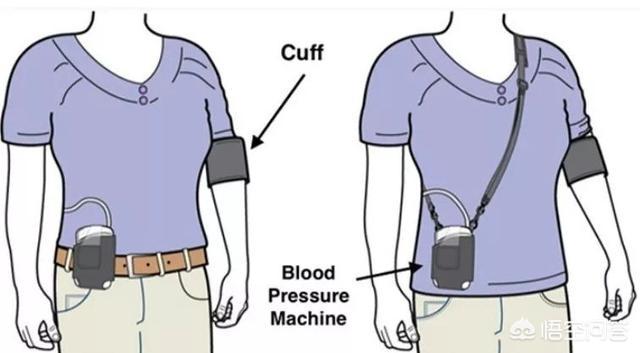
Patients suspected of having upright hypotension should also be measured for elevated blood pressure in the lying and standing positions, and of course the diagnosis should not be made on the basis of one or two in-office blood pressure measurements alone, but also over a period of time for further observation of blood pressure changes and overall levels.
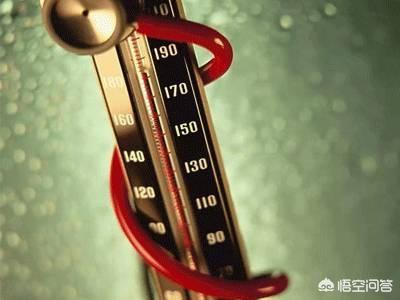
Once a diagnosis of hypertension is made, then it is also necessary to identify whether it is primary or secondary, make a risk classification of the condition, assess the risk stratification, and then treat it further.
Hypertension is a manifestation of a disease and not the name of a disease. Many causes can cause hypertension, and the world has not yet clarified the cause of hypertension.
Symptoms of high blood pressure are usually characterized by headache, dizziness, blurred vision, ringing in the ears, palpitations and insomnia, with more pronounced symptoms as complications arise in the damaged organs. Headache, dizziness, and lightheadedness are common neurological symptoms of hypertension, and sometimes there is heaviness of the head, tightness of the neck plate and stiffness.

How to determine your high blood pressure and our rules for blood pressure:Diastolic blood pressure (low pressure) is higher than 90mmhg, systolic blood pressure (high pressure) is higher than 140mmhg is regarded as high blood pressure, but in order to determine high blood pressure, can not just measure the blood pressure once, you need to be guided by a doctor at least three consecutive days of blood pressure measurement to serve as a reference value.
As mentioned earlier.Hypertension is not the name of a disease, it is related to diet, spirituality, age and many other factorsHowever, hypertensive patients should eat a diet that is low in salt, fat, cholesterol and calories. Cooking mainly with vegetable oil, reduce the intake of fat meat and meat products, animal offal contains high cholesterol and should be eaten less. Eat more vegetables, fruits and other high-vitamin foods, avoid drinking coffee, strong tea, alcohol and other stimulating foods. Hypertensive patients should especially quit smoking and drinking.

The appearance of high blood pressure, and do not need to panic, as long as the doctor's guidance under the guidance of reasonable use of drugs, most of them can be well controlled. But here to remind you of 2 things:
1, do not gullibly believe that those can cure high blood pressure theory and drugs, because the world has not even determined the ultimate cause of high blood pressure, as long as the publicity of such, all a lie;
2, do not listen to the "summer heat, antihypertensive drugs can be reduced or stopped", arbitrary reduction or discontinuation of drugs, will lead to consistent disease outbreaks, such as stroke, sudden death, so the reduction, discontinuation, change of drugs, should be carried out under the guidance of a doctor.

Finally, I would like to say to everyone: maintain a happy mood, calm mind, is essential for people with high blood pressure Oh ......
This question and answer are from the site users, does not represent the position of the site, such as infringement, please contact the administrator to delete.